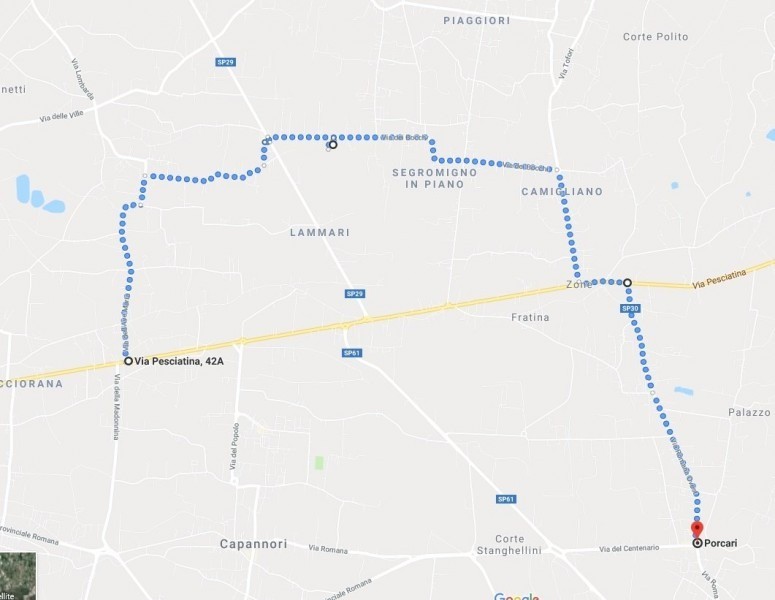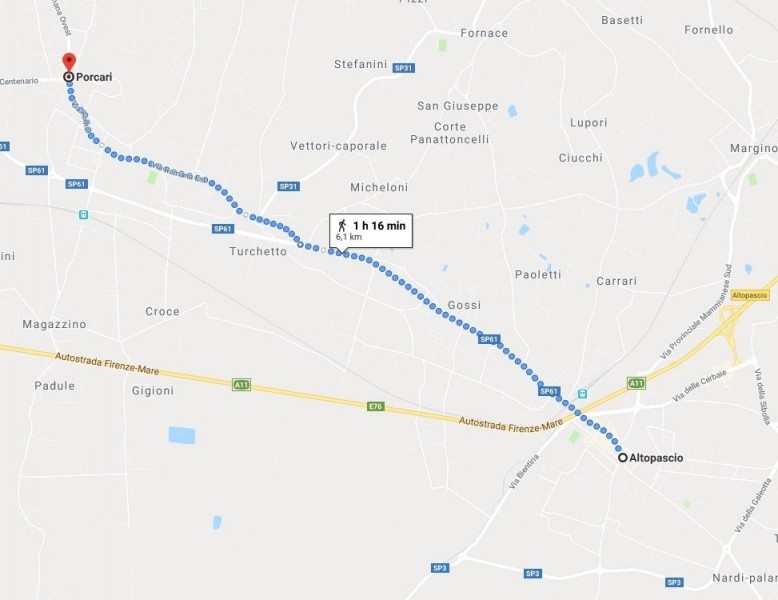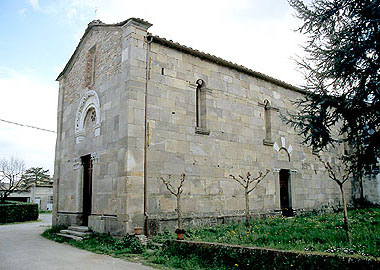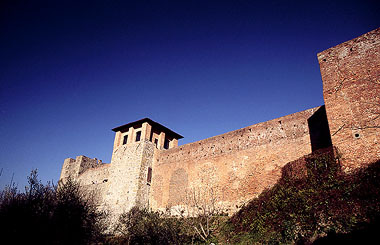The Via Francigena in the Piana di Lucca
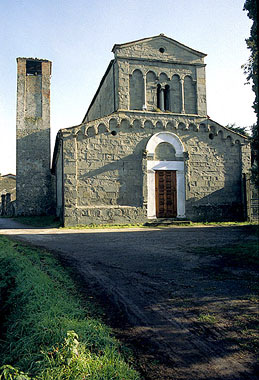
In the Middle Ages the Via Francigena was the main route for pilgrims heading for Rome, the Holy See; it also became an extremely important channel of cultural exchange and trade.
Together with the penitent pilgrims also merchants bound for the trade fairs in northern Europe began to travel along the Via Francigena: this intensive use of the road led to the construction of a series of hospices, villages, monasteries and castles along its course; today they represent good examples of Romanesque architecture, often well preserved and enhanced by the beauty of the landscape.
The first place we suggest you visit along the Lucca section of the Via Francigena is the XIth century Hospital of Altopascio built as a shelter for pilgrims. Proceeding in direction of Pozzeveri, an ancient village with a XIIth century abbey that prospered until the end of XIVth, we reach present day Montecarlo that has a castle and a well preserved XIIth century parish church, San Piero in Campo. In Porcari, the next stop along your pilgrimage, where in the XIth century you would have seen the churches of S. Maria and S. Michele Arcangelo, you will come upon the remains of a castle, theatre of clashes between opposing factions of local gentry.
The next stop on the pilgrim's road is the small Lombard village of Rughi, where you can visit the Medieval church of Santa Maria which presents radical changes to its original structure and has unfortunately lost its XIIth century Hospital annex.
Arriving in Lunata you can visit the Hospital of SS. Matteo and Pellegrino, an annex of the parish church of S. Frediano, where pilgrims were assisted in Middle Ages and of which only the bell tower and some traces within the present day church remain.
Of particular interest in the territory of Capannori, rich as it is in Medieval fortifications and churches, are that of San Leonardo in Treponzio, with its façade attributed to the school of Guidetto and the richly decorated church of San Gennaro. After Capannori you reach the village of Lammari with its XIIth century San Cristoforo church. If you turn off towards Segromigno you can visit also the churches of San Lorenzo, a good example of the different stages in the evolution of Medieval architecture.
Together with the penitent pilgrims also merchants bound for the trade fairs in northern Europe began to travel along the Via Francigena: this intensive use of the road led to the construction of a series of hospices, villages, monasteries and castles along its course; today they represent good examples of Romanesque architecture, often well preserved and enhanced by the beauty of the landscape.
The first place we suggest you visit along the Lucca section of the Via Francigena is the XIth century Hospital of Altopascio built as a shelter for pilgrims. Proceeding in direction of Pozzeveri, an ancient village with a XIIth century abbey that prospered until the end of XIVth, we reach present day Montecarlo that has a castle and a well preserved XIIth century parish church, San Piero in Campo. In Porcari, the next stop along your pilgrimage, where in the XIth century you would have seen the churches of S. Maria and S. Michele Arcangelo, you will come upon the remains of a castle, theatre of clashes between opposing factions of local gentry.
The next stop on the pilgrim's road is the small Lombard village of Rughi, where you can visit the Medieval church of Santa Maria which presents radical changes to its original structure and has unfortunately lost its XIIth century Hospital annex.
Arriving in Lunata you can visit the Hospital of SS. Matteo and Pellegrino, an annex of the parish church of S. Frediano, where pilgrims were assisted in Middle Ages and of which only the bell tower and some traces within the present day church remain.
Of particular interest in the territory of Capannori, rich as it is in Medieval fortifications and churches, are that of San Leonardo in Treponzio, with its façade attributed to the school of Guidetto and the richly decorated church of San Gennaro. After Capannori you reach the village of Lammari with its XIIth century San Cristoforo church. If you turn off towards Segromigno you can visit also the churches of San Lorenzo, a good example of the different stages in the evolution of Medieval architecture.
- Antiche chiese della Garfagnana: S. Agostino di Vagli e S. Biagio del Poggio, Lucca, Maria Pacini Fazzi, 1991
- STOPANI R., Guida ai percorsi della via Francigena in Toscana, Firenze, 1995
Scopri altre attrazioni vicino a The Via Francigena in the Piana di Lucca
See allYou may also like..
See allFind more
0







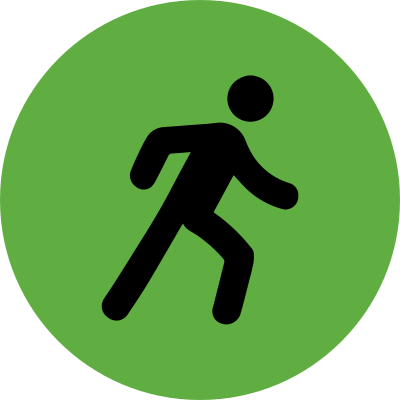 On foot
On foot


